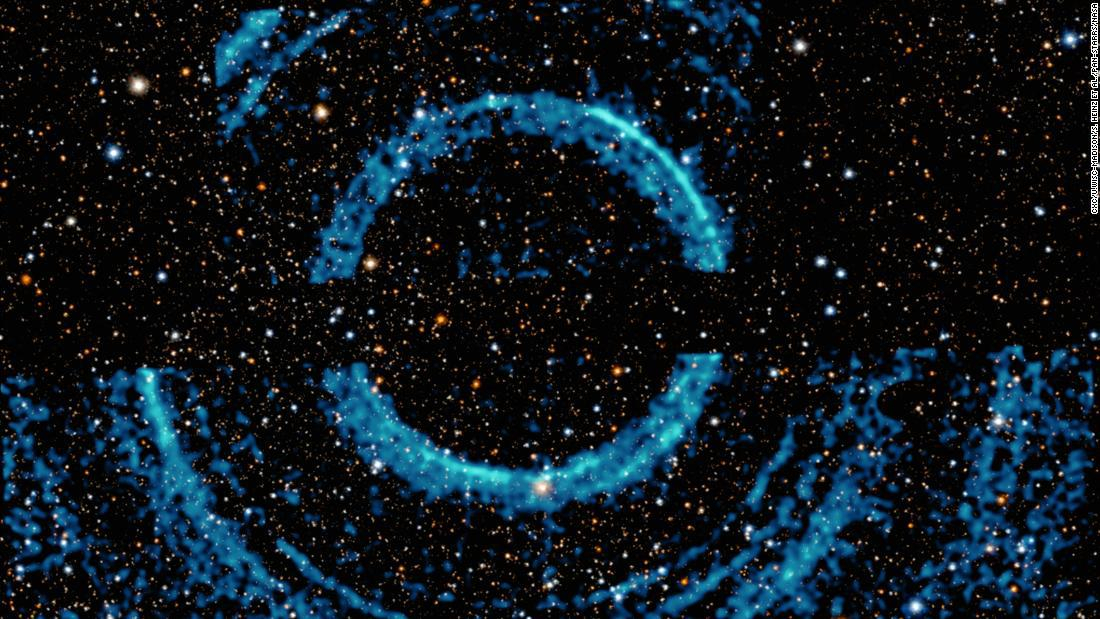(CNN) – Black holes are one of the last mysteries of the universe, hard to imagine. But thanks to the recently released NASA image, we can visualize a little better now.
The NASA’s Lunar X-Ray Laboratory Neil Kehral’s Swift Laboratory captured bright, spectral rings around a black hole. X-ray images reveal the invisible.
The black hole is in a binary system with an asteroid, and the gravitational star of the black hole pulls the object and forms a disk around it.
The star-black hole system is called V404 Signi and is located 7,800 light-years from Earth. The star is half the mass of our sun.
Launched in 2004, the space-based Swift Laboratory detected an X-ray eruption in June 2015 from a binary system. This eruption created energetic rings that can be seen in X-ray images.
Echoes of light
The event that created the rings echoes the light. When X-rays exploded from the binary system they were formed in this system when they reflected dust clouds scattered between the V404 signal system and the Earth.
Space is full of dust, but it looks like smoke filled with tiny solid particles.
A new image released by NASA combines X-rays of the moon with data collected in optical light by the Bon-Stars telescope in Hawaii, filling in the surrounding stars.
In 2015, Chandra observed the system on July 11-25, while Swift did so between June 30 and August 25.
Eight rings created by X-rays from the 2015 eruptions can be seen jumping out of the dust clouds. These rings will help scientists better understand the black hole inside the V404 signal system and the space between the system and the Earth.
The diameter of the rings allows researchers to determine the distance of the dust clouds used to create the glowing rings. The big ring, the cloud is approaching the earth.
Another application of X-rays
Researchers use X-rays to scan at doctor’s offices or at package scanners at the airport.
This means that they were able to use the brightness of the X-rays to determine the composition of the dust clouds based on the X-rays they absorb. The researchers found that the dust was made up of graphite and silicate grains.
The new film is another fascinating insight into how mysterious black holes and X-ray labs illuminate invisible aspects of the universe.





:quality(85)/cloudfront-us-east-1.images.arcpublishing.com/infobae/KTKFKR763RBZ5BDQZJ36S5QUHM.jpg)